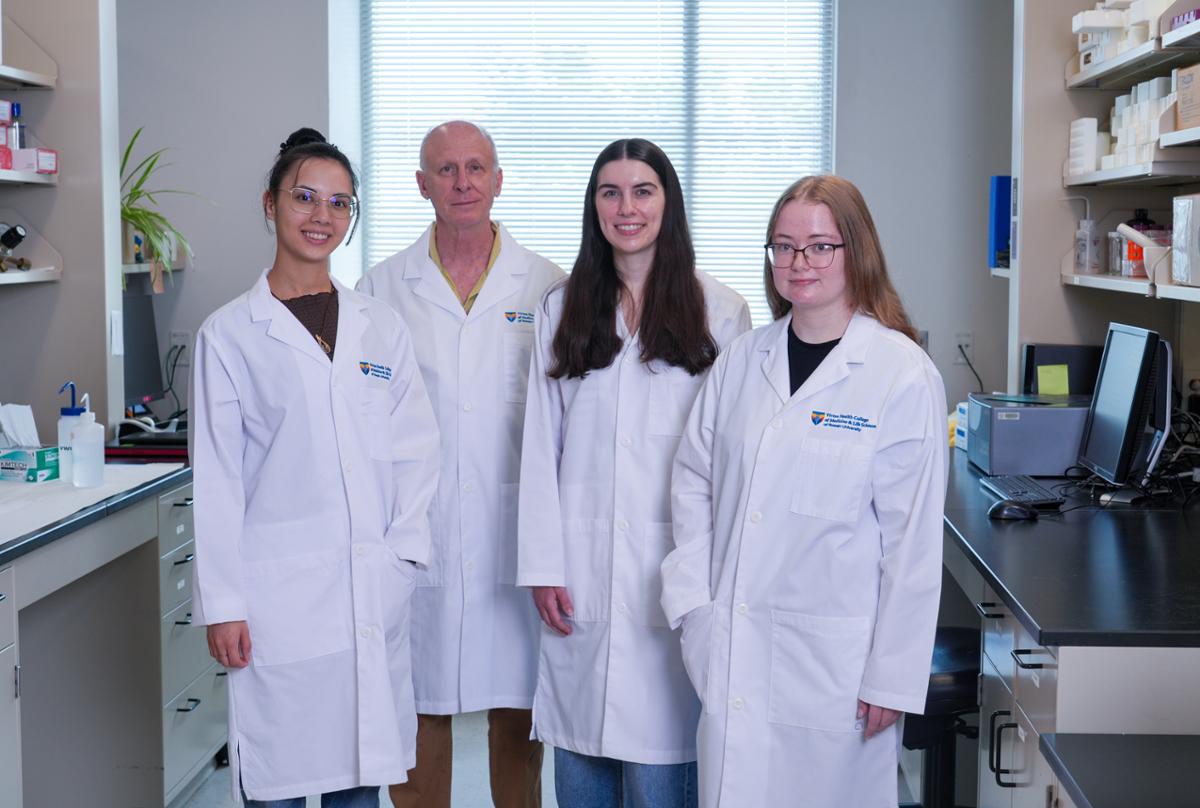Targeting a cancer-driving protein with traditional medicine and lasers
Targeting a cancer-driving protein with traditional medicine and lasers

A new study led by Rowan researchers indicates that two therapies—a compound used in traditional medicine and a laser-based therapy—might effectively treat oral cancer.
In experiments recently published in the Journal of Cancer Research and Clinical Oncology, the team gave patients lozenges containing the compound Maackia amurensis seed lectin (MASL), which is named after the ornamental tree from which it is derived. In other, lab-based experiments, they selectively destroyed cancer cells with lasers. Both strategies, which could be used individually or together, target the same protein on malignant cells.
When developing cancer therapies, researchers often look for differences between normal and malignant cells, a strategy that can yield enormous numbers of results. To narrow the possibilities, the team focused on the process by which cancer cells sever physical connections with their normal neighbors to unleash their malignant potential.
“It's a different approach to look at how cancer cells break away from the control of their normal neighboring cells,” says study researcher Gary Goldberg, Ph.D., a professor in the Virtua Health College of Medicine & Life Sciences of Rowan University. “This enables us to precisely identify and neutralize cancer cells with minimal harm to other cells in the body.”
Goldberg and his team focused on one particularly promising protein involved in this process: podoplanin. After malignant cells break physical connections to their neighbors, podoplanin is expressed as a receptor on the cancer cells and drives them to migrate to new locations. Migration is an essential step that enables tumors to invade new tissue and metastasize (spread elsewhere in the body).
Podoplanin shows up in highly aggressive cancers, including the most common form of oral cancer, oral squamous cell carcinoma (OSCC). Precancerous oral lesions that express podoplanin are much likely to become full-blown cancer.
The team then looked for compounds likely to target podoplanin and landed on MASL. They later learned that some traditional medicines contain MASL to treat cancer and arthritis.
The current study, conducted in collaboration with a group led by Dr. Mahnaz Fatahzadeh at the Rutgers New Jersey Medical School, draws on funding from agencies including the U.S. National Institutes of Health (NIH). The NIH is also supporting work by Sentrimed, a company Goldberg founded to develop therapies based on this research.
In this trial, the researchers gave oral cancer patients lozenges containing 100 milligrams of MASL, roughly the amount prescribed in traditional medicines. Control patients received placebo lozenges that did not contain MASL.
The researchers did not find any undesirable side effects for patients who took MASL. Meanwhile, in lab experiments, the researchers exposed OSCC cells taken from patients to the compound, which caused the cancer cells to stop migrating and stop growing. The researchers also found that a second approach—marking podoplanin-expressing cancer cells with fluorescent dye and then selectively destroying them with a near-infrared laser—could kill OSCC cells by a novel process known as near-infrared photoimmunotherapy.
“It's a more dynamic and aggressive way to attack cancer cells that express podoplanin,” Goldberg says.
While MASL appears well suited to preventing or delaying precancerous oral lesion progression into cancer, the laser therapy is likely better suited to destroying full-blown cancer, according to Goldberg. It’s also possible that combining them may have synergistic effect, he says.
Sentrimed is now raising funds to pursue a larger clinical trial to further develop MASL and possibly immunotherapies that target podoplanin into effective anticancer agents.